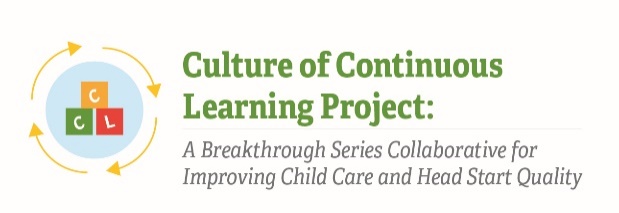Instrument 2_Pre-work Assignment_Data Collection Planning WS.Clean
Culture of Continuous Learning Project: Case Study
Instrument 2_Pre-work Assignment_Data Collection Planning WS.Clean
OMB: 0970-0605

Instrument 2: Pre-Work Assignment: Data Collection Planning Worksheet
Culture of Continuous Learning Project: A Breakthrough Series Collaborative for Improving Child Care and Head Start Quality
Respondents |
Time of Data Collection |
BSC Teams (Team Data Manager and Senior Team Leader) |
Baseline (T1)
|
Note: Specific metrics in this data collection worksheet are illustrative; different metrics may be included depending on the findings discovered during the implementation process. This data collection worksheet was pulled from CCL Phase I instruments and has been adapted to meet the needs of the current project.
Metrics will be selected based on relevance at time of data collection such that the time to complete the data collection worksheet is no more than 120 minutes.
Purpose
T
The
Paperwork Reduction Act of 1995 (Pub. L. 104-13) Statement:
This collection of information is voluntary and will be used to
establish a concrete plan for how to collect the metrics data for
the BSC. Public reporting burden for this collection of information
is estimated to average 120 minutes per response, including the time
for reviewing instructions, gathering and maintaining the data
needed, and reviewing the collection of information. An agency may
not conduct or sponsor, and a person is not required to respond to,
a collection of information unless it displays a currently valid OMB
control number. The OMB number and expiration date for this
collection are OMB #: 0970-XXXX, Exp: XX/XX/XXXX. Send comments
regarding this burden estimate or any other aspect of this
collection of information, including suggestions for reducing this
burden to Kathryn Tout, [email protected] or Child Trends, 708 N
1st
Suite #333 Minneapolis, MN 55401 Attention: Kathryn Tout
Metric |
How will the data be collected? |
Who will collect the data? |
When will the data be collected? Where will it be collected & stored? |
What tools, resources, and supports do we need? |
|
|
|
|
|
|
|
|
|
|
|
|
|
|
|
|
|
|
|
|
|
|
|
|
|
|
|
|
|
|
7a. Staff Perceptions that the Center is Culturally Responsive: # of staff who report they feel that the center is culturally responsive |
|
|
|
|
7b. Family Perceptions that the Center is Culturally Responsive: # of families who report they feel that the center is culturally responsive |
|
|
|
|
8. Teaching Staff Feeling Comfortable Managing Children’s Behaviors: # of teaching staff who respond that they felt comfortable or confident in promoting pro-social behavior and managing and/or responding to children’s behavior in the classroom in the week prior to the data collection |
|
|
|
|
[Additional metric as defined in the updated collaborative change framework] |
|
|
|
|
[Additional metric as defined in the updated collaborative change framework]
|
|
|
|
|
[Additional metric as defined in the updated collaborative change framework] |
|
|
|
|
| File Type | application/vnd.openxmlformats-officedocument.wordprocessingml.document |
| Author | Jen Agosti |
| File Modified | 0000-00-00 |
| File Created | 2023-08-26 |
© 2025 OMB.report | Privacy Policy